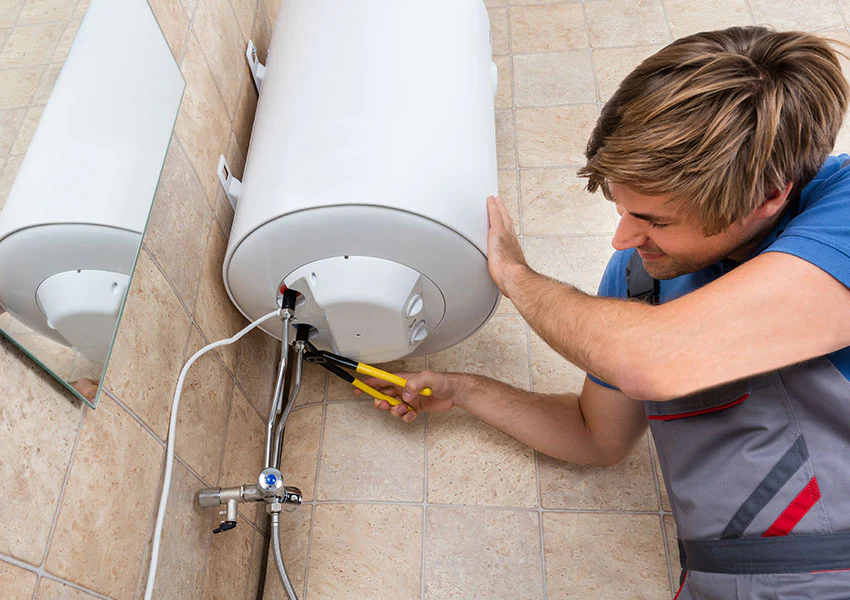Step-by-Step Guide to Caring for Your Home's Hot Water System
Schedule ServicesThe content following next pertaining to How to Maintain Your Water Heater & Prolong its Life is rather captivating. Don't miss it.

Warm water is crucial for daily convenience, whether it's for a revitalizing shower or washing recipes. To guarantee your warm water system runs effectively and lasts longer, regular upkeep is crucial. This article supplies useful pointers and understandings on exactly how to maintain your home's hot water system to stay clear of disruptions and costly fixings.
Intro
Preserving your home's warm water system may seem daunting, yet with a couple of easy actions, you can guarantee it operates efficiently for many years to come. This guide covers every little thing from recognizing your hot water system to do it yourself maintenance pointers and understanding when to call expert assistance.
Importance of Maintaining Your Warm Water System
Routine upkeep not only expands the lifespan of your hot water system yet also ensures it runs efficiently. Disregarding upkeep can lead to lowered efficiency, greater energy costs, and even premature failing of the system.
Signs Your Warm Water System Demands Maintenance
Understanding when your warm water system needs interest can protect against major problems. Keep an eye out for signs such as irregular water temperature level, unusual sounds from the heating system, or rusty water.
Comprehending Your Warm Water System
Prior to diving into maintenance jobs, it's helpful to understand the fundamental components of your hot water system. Generally, this includes the hot water heater itself, pipes, anode rods, and temperature level controls.
Month-to-month Maintenance Tasks
Routine month-to-month checks can aid capture minor issues prior to they intensify.
Flushing the Water Heater
Purging your water heater removes debris build-up, enhancing efficiency and lengthening its life.
Monitoring and Changing Anode Rods
Anode poles prevent corrosion inside the tank. Inspecting and replacing them when worn is important.
Evaluating and Changing Temperature Level Setups
Readjusting the temperature level setups ensures optimal performance and safety.
Do It Yourself Tips for Upkeep
You can execute several maintenance tasks yourself to keep your hot water system in leading problem.
Checking for Leaks
Regularly inspect pipelines and links for leakages, as these can cause water damages and higher bills.
Checking Stress Alleviation Valves
Testing the stress relief valve guarantees it functions appropriately and stops too much pressure build-up.
Protecting Pipes
Insulating warm water pipes reduces warmth loss and can conserve power.
When to Call a Specialist
While do it yourself maintenance is advantageous, some concerns call for expert competence.
Facility Concerns Calling For Specialist Aid
Instances consist of significant leakages, electric issues, or if your hot water heater is constantly underperforming.
Routine Professional Maintenance Benefits
Professional maintenance can include thorough examinations, tune-ups, and making sure conformity with safety and security standards.
Conclusion
Regular maintenance of your home's hot water system is necessary for effectiveness, longevity, and expense financial savings. By adhering to these tips and understanding when to seek specialist aid, you can ensure a trusted supply of warm water without unforeseen disturbances.
How to Maintain an Instant Hot Water Heater
Before tinkering with your hot water heater, make sure that it’s not powered on. You also have to turn off the main circuit breaker and shut off the main gas line to prevent accidents. Also turn off the water valves connected to your unit to prevent water from flowing into and out of the appliance. 2. When you’re done, you have to detach the purge valves’ caps. These look like the letter “T†and are situated on either side of the water valves. Doing so will release any pressure that has accumulated inside the valves while at the same time avoid hot water from shooting out and burning your skin. 3. When the purge valves’ caps are removed, you have to connect your hosing lines to the valves. Your unit should have come with three hoses but if it didn’t, you can purchase these things from any hardware or home repair shops. You can also get them from retail stores that sell water heating systems. Read the user’s manual and follow it to complete this task properly. When the hosing lines are connected, open the purge port’s valves. 4. You should never use harsh chemical cleaners or solutions when cleaning your unit. Make use of white vinegar instead. It should be undiluted and you’ll probably use about 2 gallons. 5. Now flush your water heater. This task should probably take about 40 minutes. We can’t give you specific directions for this because the procedure is carried out depending on the type, model and brand of your heater. With that being said, refer to the user’s manual. 6. When you’re done draining the unit, you have to turn off the purge port valves again. Remove the hosing lines that you earlier installed on each of the water valves. Put the valve caps (purge port) back in their respective places and be very careful so as not to damage the rubber discs that are found inside these caps. 7. Now that everything’s back in place, check your user’s manual again to find out how to reactivate your water heating system. 8. Once it is working, turn one of your hot water faucets on just to let air pass through the heater’s water supply pipes. Leave the tap on until water flows smoothly out of it. https://www.orrplumbing.com/blog/2014/september/how-to-maintain-an-instant-hot-water-heater/

Hopefully you enjoyed reading our post on Water Heater Maintenance Tips You Can't Afford to Forget. Thanks for finding the time to read our content. Do you know someone else who is involved in the subject? Do not hesitate to share it. Thank you so much for your time spent reading it.
Schedule Service Pickup